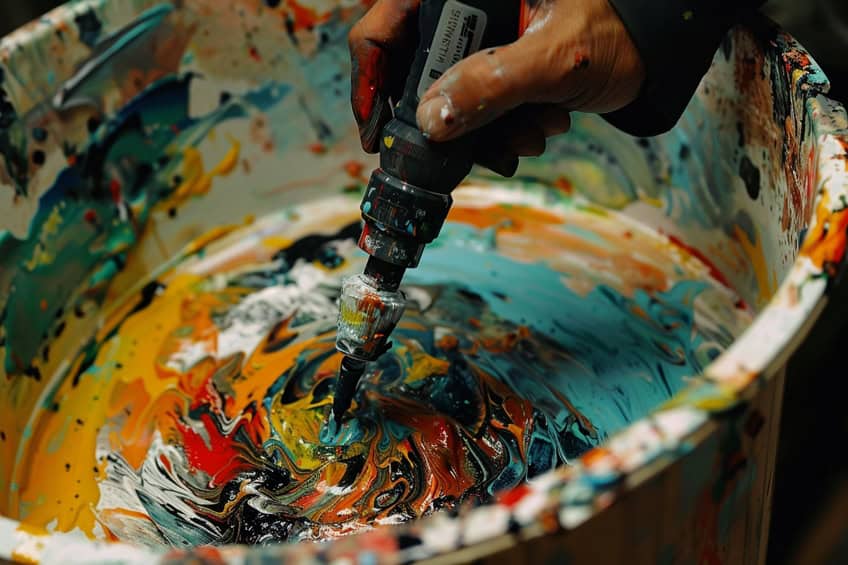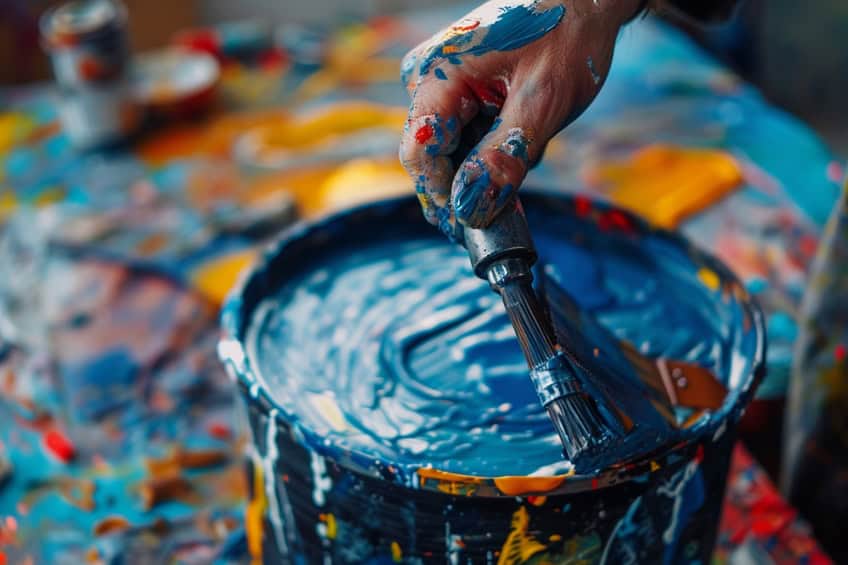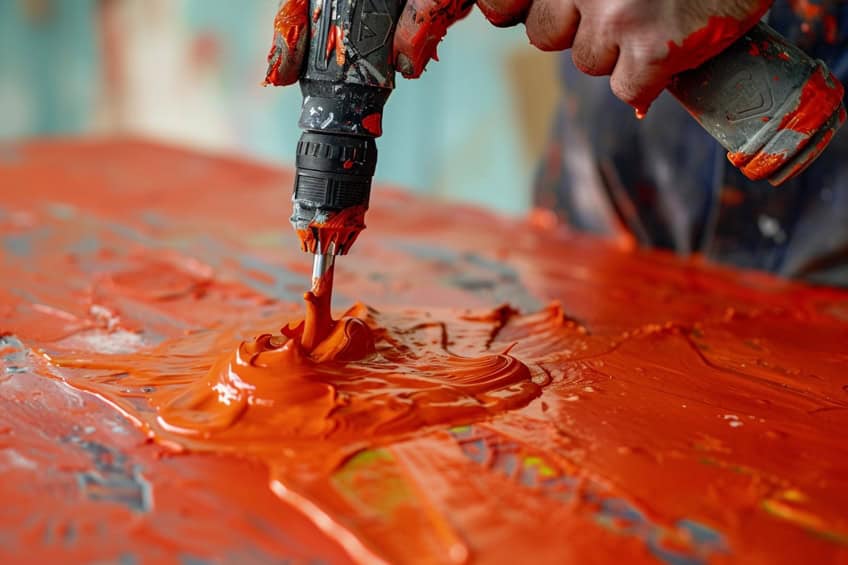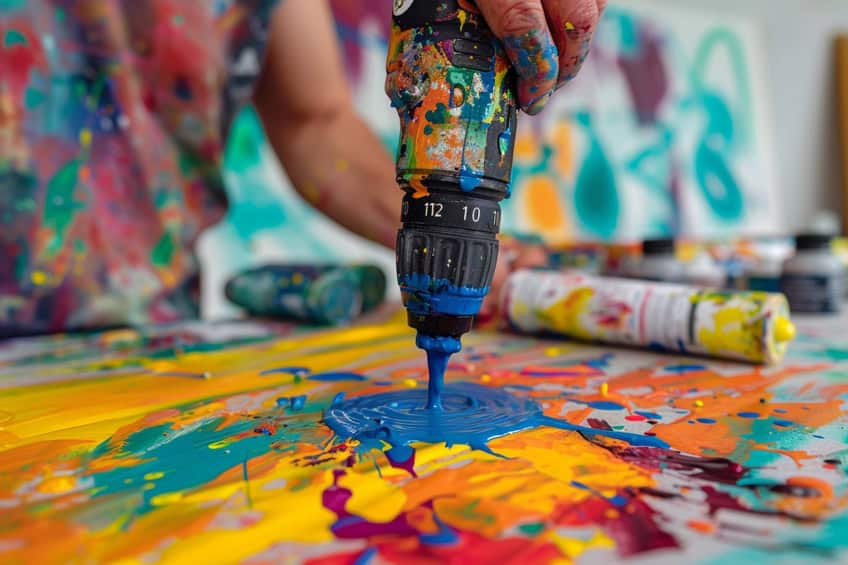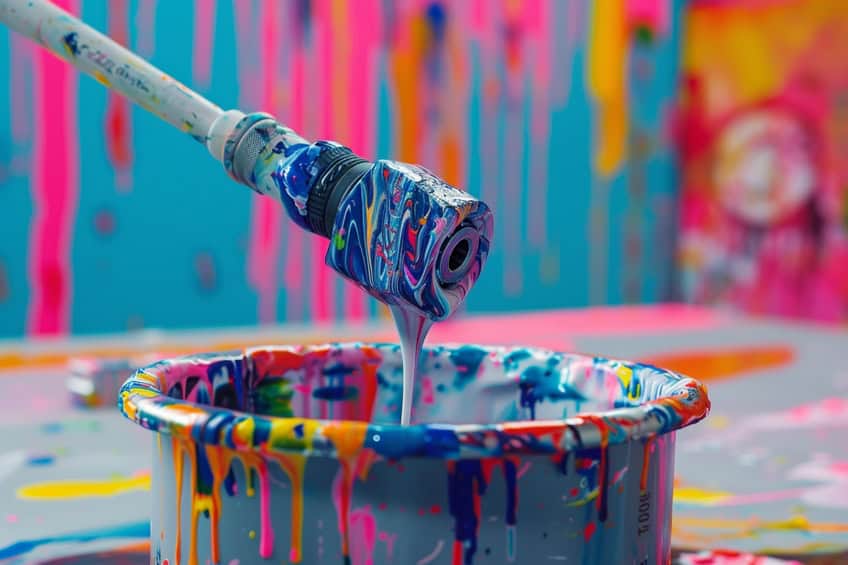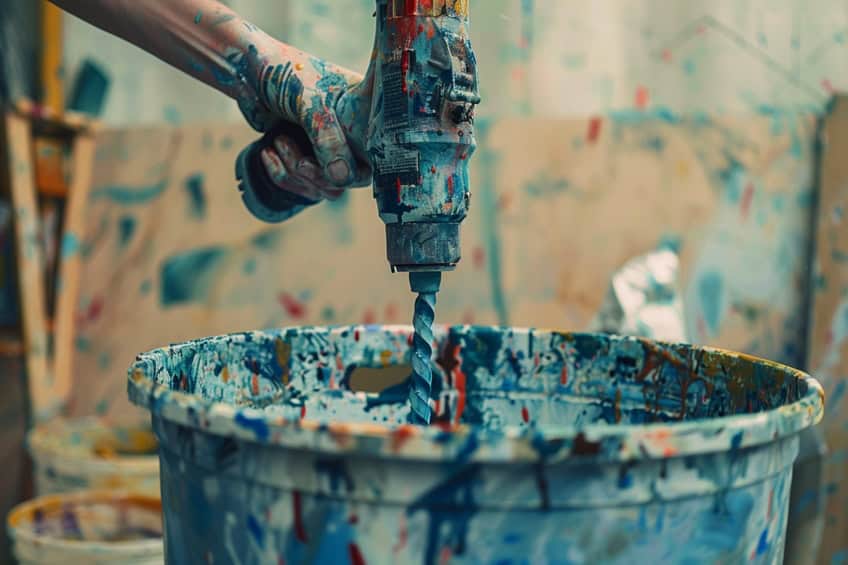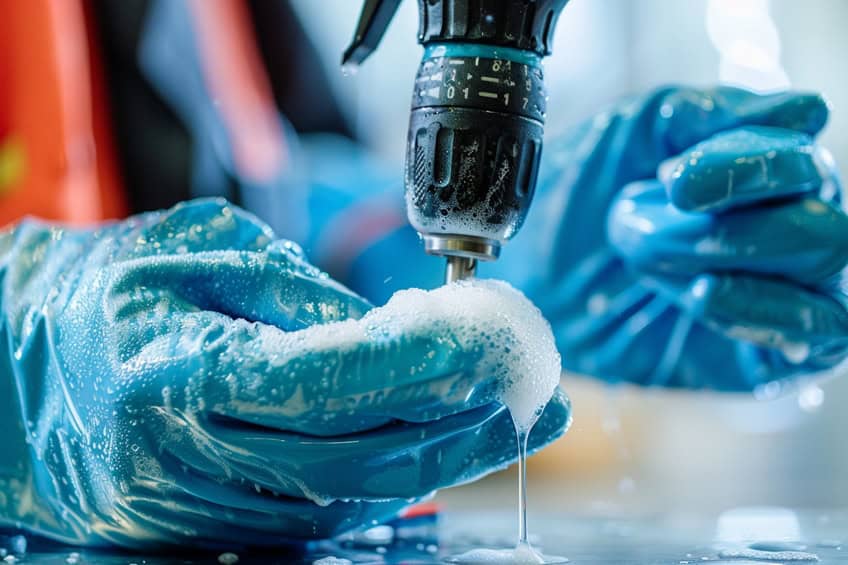How to Stir Paint Without a Stick – No Stick, No Problem!
This post may contain affiliate links. We may earn a small commission from purchases made through them, at no additional cost to you. You help to support resin-expert.com
Are you tired of searching for a paint stirrer every time you need to mix your favorite colors? Say goodbye to the hassle and hello to creative DIY solutions! In this article, we’ll dive into the art of stirring paint without a stick. Whether you’re in a pinch or just feeling innovative, we’ve got you covered with quirky and effective methods that will make your paint-mixing process a breeze. Get ready to discover unconventional techniques that will leave you wondering why you ever used a stick in the first place!
Table of Contents
Key Takeaways
- Stirring paint is crucial for consistent color and texture.
- Alternative tools can be effective for stirring without a traditional stick.
- Proper technique ensures thorough mixing and prevents mess.
Preparing to Stir Paint
Stirring paint is an essential step in the painting process to ensure a consistent color and texture throughout your project. While a stick is a common tool for this purpose, there are times when one might not be available or you may prefer an alternative. There are several methods and household items that can be effectively used to stir paint without a traditional wooden stirrer. These unconventional tools can save the day and may even provide better results for certain types of paint and applications.
The challenge lies in achieving a thoroughly mixed paint, combining all the settled pigments with the liquid to reach a smooth and homogenous state. Whether using a drill attachment fashioned from a coat hanger, a repurposed water bottle, or simply shaking the can, each method involves certain precautions and techniques. It’s imperative to secure the paint container, use adequate motion, and apply the right amount of force to avoid splattering and ensure even blending.
Before beginning the paint stirring process, one must ensure that the right tools are at hand and understand the nature of the paint components.
Selecting Appropriate Tools
It is essential to choose tools that are both effective and accessible when preparing to stir paint. While traditional sticks are common, alternatives must cater to similar functionality, ensuring a homogeneous mix. List of potential tools:
- Electric drill: An electric drill equipped with a paddle mixer attachment can mix paint efficiently.
- Improvised stirrers: Items like an old spatula or a metal rod can function in place of a traditional paint stick.
- Hand-held mixers: Specifically designed for paint, these can ensure a thorough mix without introducing bubbles.
When utilizing power tools such as a drill, always verify that they are in proper working order and that the paddle mixer attachment is securely fastened.
Understanding Paint Components
Knowledge of the paint’s composition is crucial. Paint typically consists of a blend of pigments, resins, solvents, and additives that can settle over time. Proper stirring ensures that these components are evenly distributed. Important considerations to note are:
- Pigment settling: Heavy pigments may sink to the bottom of the paint container, requiring more vigorous stirring.
- Shear thinning: Some paints become less viscous as they are stirred, indicating that enough mixing has occurred.
One should stir the paint until achieving an even consistency, paying attention to any resistance change suggesting the paint’s readiness for use.
Common Tools to Stir Paint
When one is painting, achieving a consistent color and texture is paramount. Multiple everyday items can fulfill the role of a paint stirrer if a traditional stick is not available.
- Electric drill with mixing paddle: An electric drill fitted with a special mixing paddle attachment is efficient for stirring paint in larger quantities. This tool creates a vortex that ensures a well-mixed product.
- Wooden dowels or stir sticks: Traditionally, wooden dowels or paint paddles are used for stirring paint. They are economical and widely accessible in various sizes.
- Old spoons or rods: Metal or wooden spoons, oversized or regular, can serve the purpose provided they are long enough to reach the bottom of the paint container.
- Plastic water bottles: A clean, empty plastic water bottle can be utilized by pushing it to the container’s bottom and moving it in an up-and-down motion to mix the paint thoroughly.
Each of these tools should be moved throughout all areas of the paint container to ensure a complete mix. The choice of tool often depends on the volume of paint one needs to stir and the tools available at hand.
Stirring Technique
Achieving a smooth, uniform texture and color in paint is essential for a professional finish. This can be accomplished through various stirring techniques, each suitable for different situations and user preferences.
Manual Stirring Methods
When stirring paint manually, one can use improvised tools such as a clean water bottle. Submerge the water bottle in the paint, ensuring it reaches the bottom of the container. Using a firm grip, move the bottle in an up-and-down motion, ensuring all areas are reached for a consistent mix.
This simple method prevents the introduction of air bubbles that can occur with overzealous shaking and is both time-efficient and effective.
Another manual method is to repurpose a wire coat hanger. By straightening it out and shaping one end into a zigzag pattern, it becomes a useful tool for paint mixing. It can be used by hand, stirring in a methodical manner to maintain control and minimize splashing.
Using Power Tools
For those preferring power tools, a drill with a paint mixer attachment can save time and energy. Ensure the paint mixer is securely attached to the drill, then submerge it in the paint. Start the drill at a slow speed to avoid splashing and gradually increase as necessary.
The aim is to mix thoroughly without introducing air bubbles, which can affect the paint’s texture. Rule of thumb is to start slow and increase speed as the paint begins to mix to prevent splashing and uneven texture.
Achieving Uniform Texture and Color
The end result of any stirring technique should be a paint that is uniform in texture and color. Manual methods are less likely to cause splashing and can offer the user more control over the stirring process. Machine mixing is typically faster and can produce a smooth, uniform paint quicker, but it also has a higher risk of under-stirring or introducing air bubbles if not done carefully. Paint should be stirred until fully homogeneous; this usually takes a few minutes. However, the time spent stirring can vary depending on the age and quality of the paint.
A successful mix should look even and smooth, free of streaks or color separation.
Post-Stirring Tips
After mixing paint thoroughly, the subsequent steps ensure its quality remains intact for future use. Proper storage and cleaning maintain the integrity of the paint and tools.
Storing and Reusing Paint
Once paint is stirred, it’s crucial to store it correctly to prevent separation of the components such as binders, pigments, and additives. For oil-based or acrylic coatings, seal the lid tightly on the gallon or 5-gallon bucket to exclude air. Press down the edges of the lid to ensure an airtight seal and store in a cool, dry place away from direct sunlight.
Before reusing, check for any skin formation on the top and remove it. Gently stir the paint again to ensure all the components are well-mixed.
Cleanup and Maintenance
Immediately after use, rinse tools with the appropriate solvents; use water for latex paints and a solvent like mineral spirits for oil-based paints. Scrape off excess paint back into the container to minimize waste and ensure easier cleaning. For tools used in mixing paint, it’s essential to remove all residues to prevent dirt or dried paint from contaminating the next batch. Maintain a regular maintenance schedule for reusable tools to prolong their lifespan and performance.
Stirring paint without a stick isn’t just a practical solution; it’s a journey into the world of DIY ingenuity. From everyday household items to unexpected tools, we’ve explored a range of creative methods that can save you time, effort, and the frustration of hunting down a stirrer. So, the next time you’re ready to unleash your inner artist or tackle a home improvement project, remember these innovative techniques. Embrace the fun and flexibility of DIY solutions, and let your imagination lead the way as you stir up vibrant colors without missing a beat!
Frequently Asked Questions
What Household Items Can Be Used as a Paint Stirrer?
Household items such as old wooden spoons, chopsticks, or plastic hangers can serve as makeshift paint stirrers. One can also repurpose a kitchen whisk or a screwdriver for smaller cans of paint.
Is It Possible to Mix a Large Bucket of Paint Without Specialized Tools?
Yes, it is possible to mix a large bucket of paint by using larger household items such as a broom handle or by employing a manual labor approach, such as a back-and-forth shaking motion with a sealed container.
What Are Some Effective DIY Paint Stirrer Alternatives?
Effective DIY paint stirrer alternatives include using a drill with a mixing attachment or reusing a clean, empty water bottle to create a stirring motion within the paint. They should be robust enough to handle the density and stickiness of paint.
How Can You Ensure Paint Is Well Mixed Using Non-Traditional Methods?
To ensure paint is well mixed using non-traditional methods, one should stir consistently and reach all areas of the container. Shaking the container upside down and then right side up for a few minutes may also ensure that the paint is mixed thoroughly.


